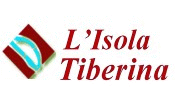The Aemilius bridge
Article Index
C) FLOODS AND RECONSTRUCTIONS
Further floods, among which the 1476 and 1495 ones have been the most devastating, made necessary, after only one century, a new and deep work of strengthening of the bridge: at first the pope Paulus III assigned the job to Michelangelo, that carried out the works too slowly, then in 1551 the next pope Iulius III passed it to Giovanni Lippi, known as Nanni di Baccio Bigio: it had been necessary a real rebuilding of one  pier and the two arches weighting on it. In this occasion a small chapel dedicated to the Virgo was built in the middle of the bridge; it is represented at least in four maps published within 1555 and 1569 (pict.3); unfortunately it lasted only five years.
pier and the two arches weighting on it. In this occasion a small chapel dedicated to the Virgo was built in the middle of the bridge; it is represented at least in four maps published within 1555 and 1569 (pict.3); unfortunately it lasted only five years.
Lippi quickly completed the works in 1552 but not carefully; on the contrary he weakened the structure of the bridge removing some marble material and selling it out. In fact only five years after the completion of the restoration the flood of September 1557 made to collapse the pier just rebuilt and the two arches weighting on it "insieme con quella bella cappelletta di Giulio III che vi era nel mezzo con tanta arte e spesa fabricata" [together that nice small chapel of Iulius III that has been built in the middle with so great skill and expense], as indicated in a Notice of Rome printed in occasion of the disastrous flood.
After a poor attempt carried out in 1561 to restore the connection between the bank and the remaining part of the bridge by means of a rudimentary wooden structure supported by ropes, the pope Gregorius XIII decided to face the economic effort for a final masonry rebuilding of the fallen structures. It was rejected the project of Luca Peto that proposed to build a single arch instead of the original two, finally eliminating the fallen pier and giving more room to the water flow, and the bridge was rebuilt within 1573 and 1575 by Matteo Bartolani from Città di Castello according to the original arrangement.



